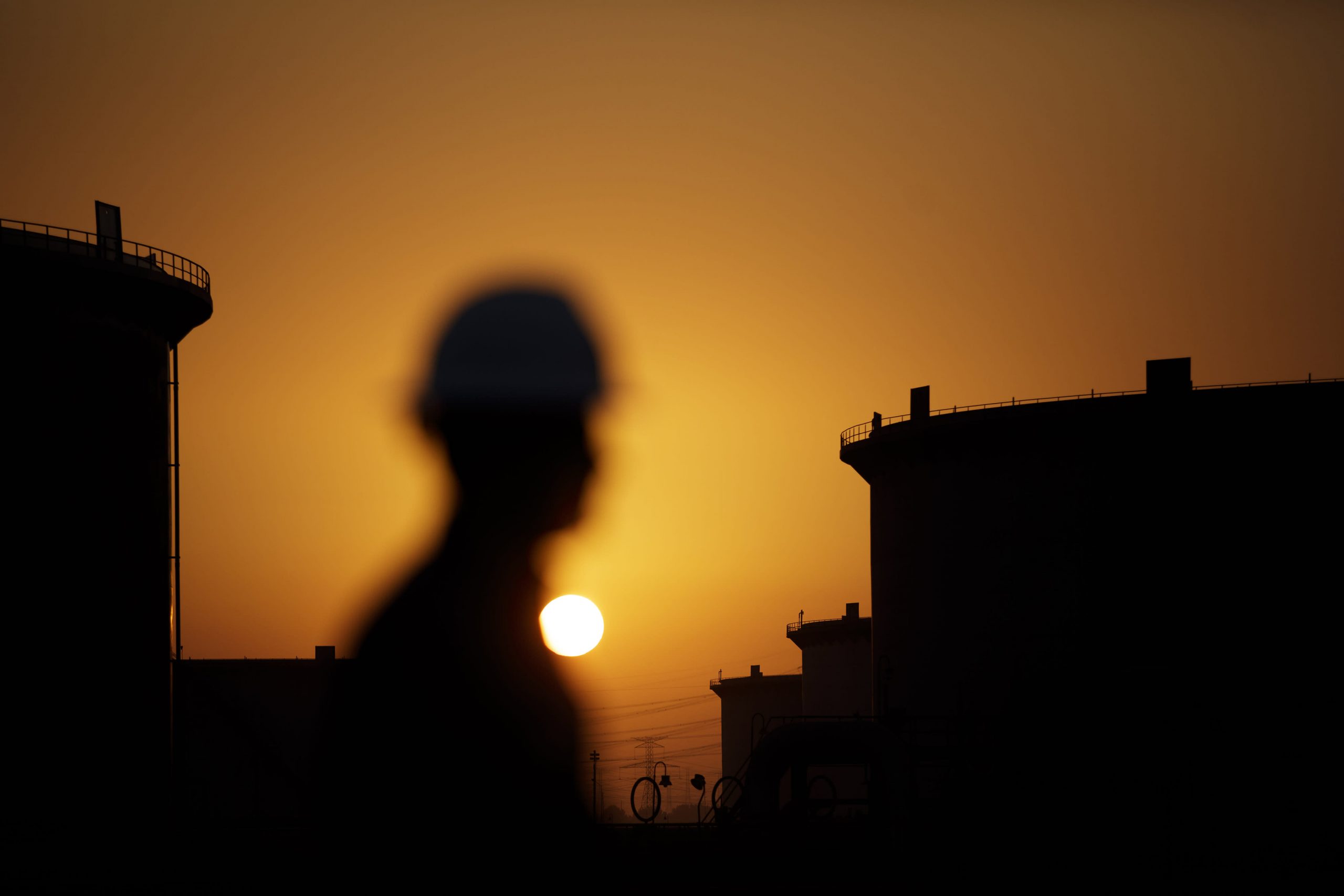The sun sets beyond crude oil storage tanks at the Juaymah tank farm at Saudi Aramco’s Ras Tanura oil refinery and oil terminal in Ras Tanura, Saudi Arabia, on Monday, Oct. 1, 2018.
Bloomberg | Bloomberg | Getty Images
Global benchmark Brent crude falling below $70 a barrel in early September — its lowest in 33 months — is terrific news for consumers, who will consequently see lower prices at the pump.
It’s also the stuff of nightmares for OPEC+, for whom oil revenues are critical.
The oil producer alliance led by Saudi Arabia earlier this month decided to delay oil production hikes for two additional months in an effort to shore up prices, but so far to no avail. Low global demand forecasts, coupled with new oil supply coming from non-OPEC countries, spell a long period of subdued crude prices.
It’s led some in the market to ask the question: Have we officially reached “peak oil”? Has demand growth hit its apex, and is it just downhill from here?
By the forecasts of OPEC itself, that’s a hard no.
The oil producer group’s 2024 World Oil Outlook report, released Tuesday, predicts strong energy demand growth of 24% globally between now and 2050. It also forecasts “robust medium-term growth” in oil demand reaching 112.3 million barrels per day in 2029, an increase of 10.1 million barrels per day compared to 2023.
A fair number of energy analysts appear to disagree with that calculation — not least those at the International Energy Agency. The Paris-based agency sees demand actually leveling off by the end of the decade to around 106 million barrels per day, according to its annual mid-term outlook published in June. The IEA still sees global oil demand rising; it just forecasts a smaller rise, and expects it to peak by the end of the decade.
The battle of the forecasts between OPEC and the IEA has gained publicity in recent years, with the latter organization pushing hard for a net-zero future.
S&P Global Commodity Insights, meanwhile, sees the medium-term future as somewhere in between, with demand reaching a peak of 109 million barrels per day in 2034 and gradually declining to fall below 100 million barrels per day in 2050.
OPEC, by contrast, sees demand hitting a whopping 120 million barrels per day by 2050.
All parties agree that demand will fall in the developing world, while rising in emerging markets led by India.
The medium-term outlook
As for the near-to-medium term outlook, analysts are bearish on oil demand and prices. This is despite the early September announcement by OPEC+ that the group would be extending its crude production cuts into December in an attempt to limit market supply.
“That two month extra time hasn’t convinced anybody who’s skeptical about the market that that’s going to do much to shore up prices,” Dave Ernsberger, head of market reporting at S&P Global Commodity Insights, told CNBC.
“So that’s the in-the-moment issue. But the much bigger issue is, existentially speaking, are we moving past the moment of peak oil demand?”
Ernsberger pointed to the growth of alternative energy forms, including the increasing use of biofuels in the maritime industry.
“What we’re moving into is an era of post-demand growth. It’s not a post-oil moment, but it’s a post-growth moment. And how does OPEC+, how does the market readjust to a world of low or no growth in demand overall?”
Price increase prospects are also dimmed by China, the world’s largest oil importer, which has put itself on a dedicated path to electrification.
“The biggest threats to higher prices for OPEC+ are external,” Li-Chen Sim, a non-resident scholar at the Washington-based Middle East Institute, told CNBC.
Those are chiefly “lackluster demand, especially from China, oil supply from non-OPEC+ sources, and internal; some members are producing more than assigned quotas.”
Estimates by international and Chinese sources show a slowing demand for oil and refined products in China, Sim said.
That is in part due to slowing Chinese economic growth of around 3% to 5% annually in recent years — still better than many other countries, she noted.
“But there’s also a structural element to the reduction in oil consumption, driven by a conscious effort to reduce its high dependence on oil (and gas) imports, and expressed in policies such as electric vehicle uptake and encouraging expansion of renewable and nuclear power,” Sim added.
In the near term, OPEC+ is still expected to bring some production back in December, several countries in the alliance are producing beyond their quotas, and more supply is coming onto the market from non-OPEC+ producers like the U.S., Guyana, Brazil, and Canada.
“It’s difficult to see prices moving much higher from here as long as that threat is out there in the market to bring those supplies back,” Ernsberger said.
In the much longer term, the eventual decline of the oil era – if it happens – will be brought on due to changing demand rather than dwindling supply, many analysts argue.
It was the late Saudi Sheikh Ahmed Zaki Yamani who said in 2000: “The Stone Age came to an end not for a lack of stones and the Oil Age will end, but not for a lack of oil.”
Checkout latest world news below links :
World News || Latest News || U.S. News
The post OPEC is highly bullish on long-term oil demand growth. Not everyone agrees appeared first on WorldNewsEra.

